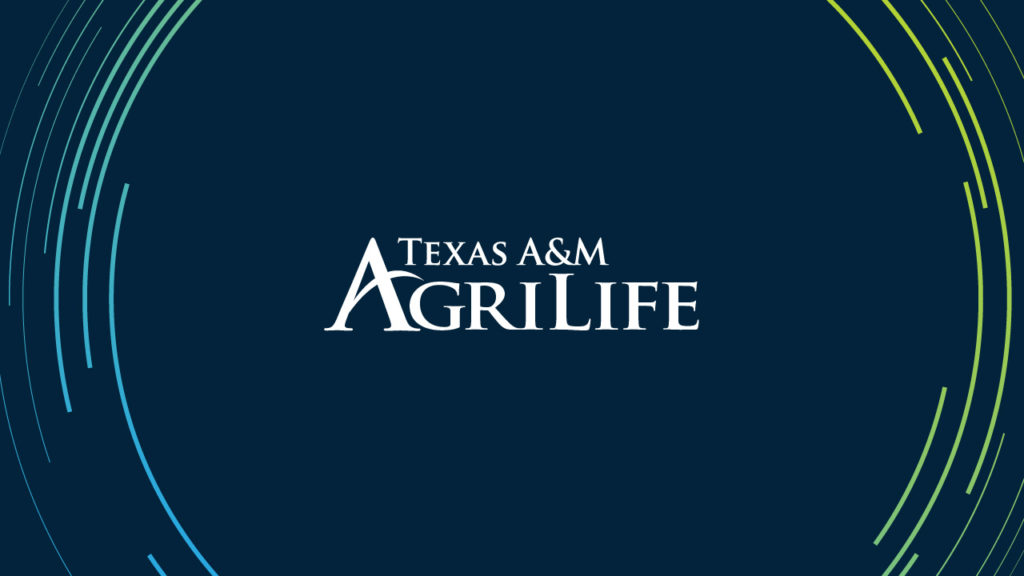New effort will work to advance societal health by being ‘stronger together’
Texas A&M AgriLife, Prairie View A&M University explore expanded collaborative agricultural research
To help meet the growing needs of Texas’ population, Texas A&M AgriLife and Prairie View A&M University have embarked on an extensive evaluation of prospective statewide agricultural and life science research.

The state’s population of more than 29 million is projected to grow to 50 million by 2050. Both Texas A&M AgriLife and Prairie View A&M, members of The Texas A&M University System, plan extensive measures to meet the needs of urban and rural Texans through innovative, collaborative research opportunities.
The two land-grant universities teamed up for a virtual summit themed Stronger Together.
Themes ranging across agriculture
More than 300 faculty members, researchers and specialists participated in the virtual summit for a discussion centering on four key themes:
- Nutrition and Food Systems.
- Animal Science.
- Plant and Environmental Sciences.
- International Programming.
“What an opportunity we have to advance the land-grant mission by building on existing collaborative programs between Texas A&M AgriLife and Prairie View A&M for the benefit of the state,” said Patrick J. Stover, Ph.D., vice chancellor of Texas A&M AgriLife, dean of the College of Agriculture and Life Sciences and director of Texas A&M AgriLife Research. “As part of this mission, everything we do should advance society. Texas is one of the fastest urban growing states, and its 29 million people are all part of the agriculture supply chain. We need to make sure everyone is engaged, supportive and knowledgeable about agriculture to improve the health of individuals, our communities, our economies and our environment.”
Statewide capabilities in animal science
The scope of both land-grant universities’ research capabilities in animal science is extensive. Texas A&M AgriLife boasts 55 faculty members on the flagship campus in Bryan-College Station and 15 faculty located off campus at research and extension centers throughout the state. Prairie View A&M offers a long history of international meat goat research capabilities to go along with plant science, a new meat science laboratory and an existing small-farm education outreach program.
Cliff Lamb, Ph.D., head of the Texas A&M College of Agriculture and Life Sciences Department of Animal Science, said key areas of excellence within the department include cattle adapted to tropical and subtropical environments; livestock pregnancy and developmental programming; and food product safety, quality and nutrition.
Gary Newton, Ph.D., research scientist leader for the animal systems science program at Prairie View A&M, provided an overview of animal systems research opportunities that include gene networks, reproductive physiology and assisted reproductive technologies. Prairie View A&M University continues to maintain its extensive research and extension outreach work in goat production.
Climate and environmental emphasis areas
In the area of the climate and environment, Ali Fares, Ph.D., Prairie View A&M water security researcher, discussed a variety of emphasis areas including water allocation, data modeling, climate change and vegetable research varieties growing under different organic environments.
Texas A&M AgriLife’s plant pathology program also boasts prospects in collaborative research in the areas of cotton root rot, citrus, turfgrass and unmanned aerial systems pathogen detection. Meanwhile, hemp, microgreens, medicinal plants and urban agriculture are current research programs of the Texas A&M College of Agriculture and Life Sciences Department of Soil and Crop Sciences with collaborative prospects.
Elsa Murano, Ph.D., director of the Norman Borlaug Institute for International Agriculture at Texas A&M, said the foundation of the institute named after the Father of the Green Revolution is partnering with scientists around the globe in agriculture and life sciences to elevate small farmers out of poverty through science.
“We have partnerships in veterinary medicine, public health, international policy, business and entrepreneurship, but we also break the boundaries of our field of study,” she said. “We have relationships with Corteva, Starbucks and other universities. Our Center for Coffee Research and Education is helping coffee farmers in developing countries whose focus is on coffee as their livelihood crop. It also serves as a platform for student training, breeding and environmental sustainability.”
Opportunities for collaboration in nutrition
Nutrition discussions highlighted opportunities in the areas of obesity and metabolic diseases, diabetes, metabolism and energy balance.
“The work we do is critical, but even more critical is our success in collaboration,” said Gerard D’Souza, Ph.D., Prairie View A&M College of Agriculture and Human Sciences dean and director of Land Grant Programs. “We’ve taken a giant leap with respect to collaborations between both institutions. We have tremendous capacity to collaborate.”
D’Souza noted in his concluding remarks that several opportunities exist in nutrition research. Specifically, initiatives that address nutrition disparities among Texas populations “are ripe for future collaborations.”
Stover concluded the summit with, “We can be driving the future of agriculture across the globe from the state of Texas. There is so much to do. By working together, we can increase our bandwidth and range of expertise to have Texas leading the future of agriculture.”


